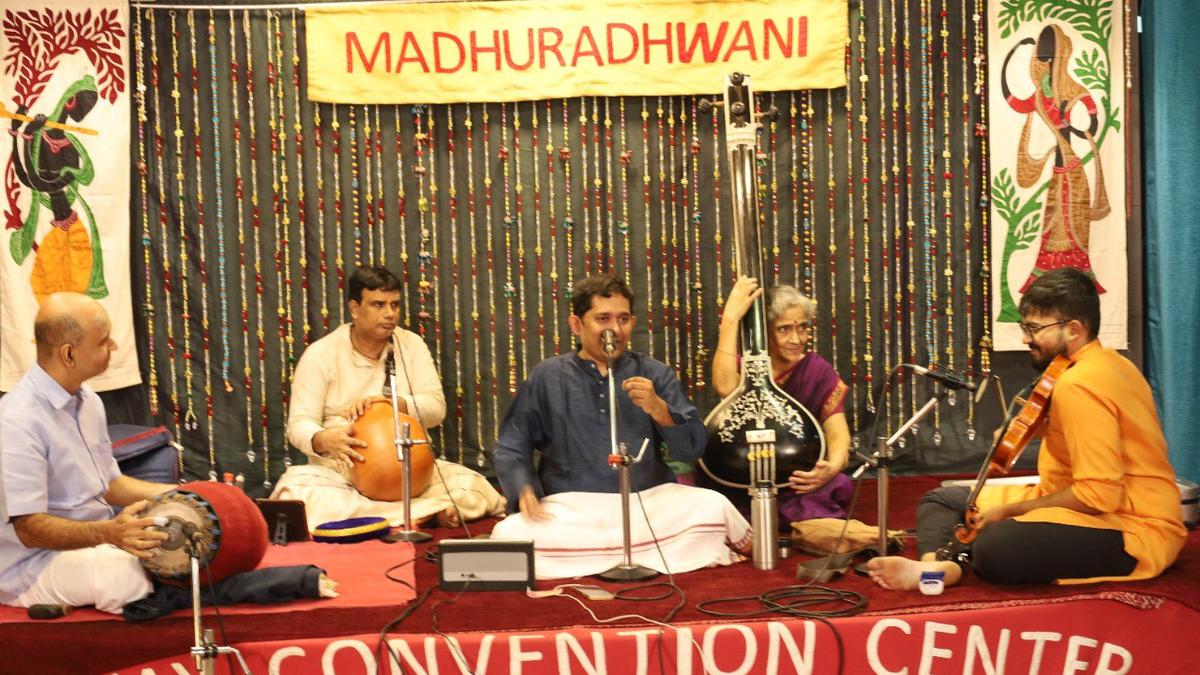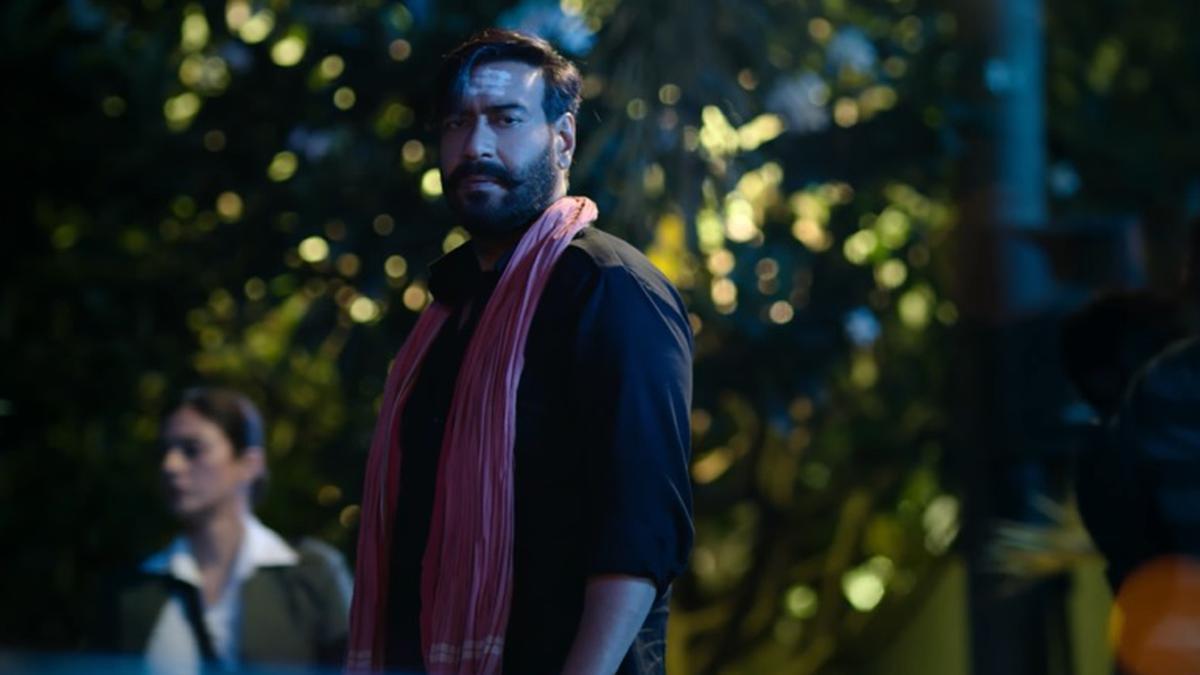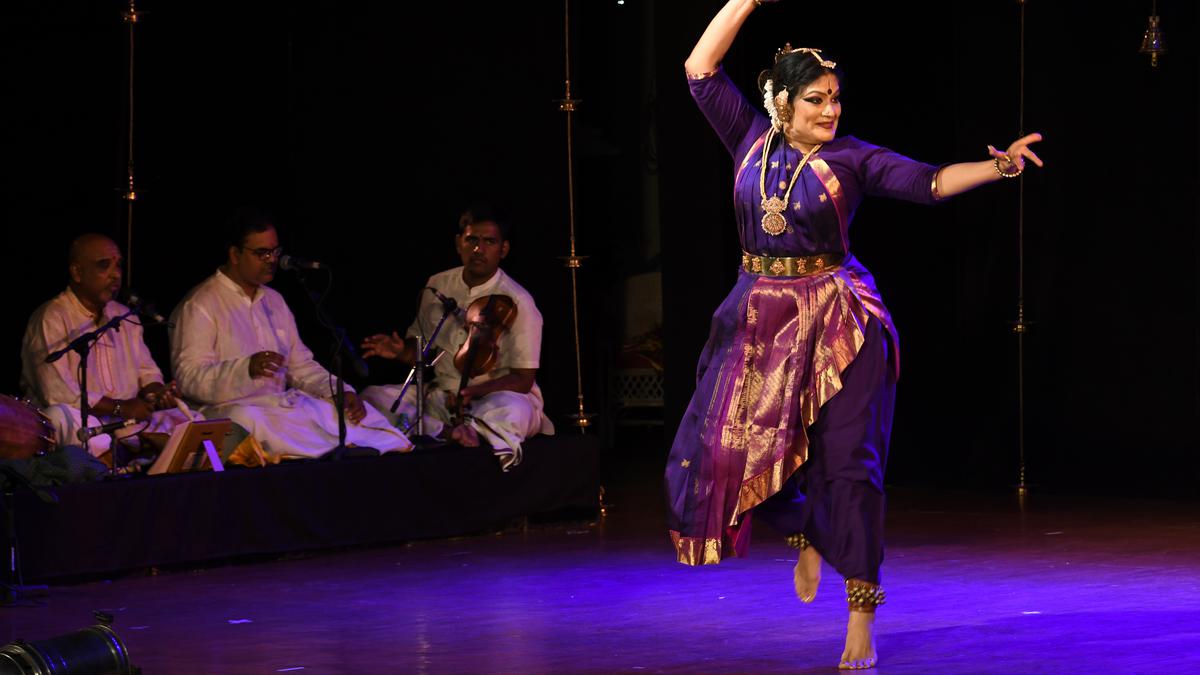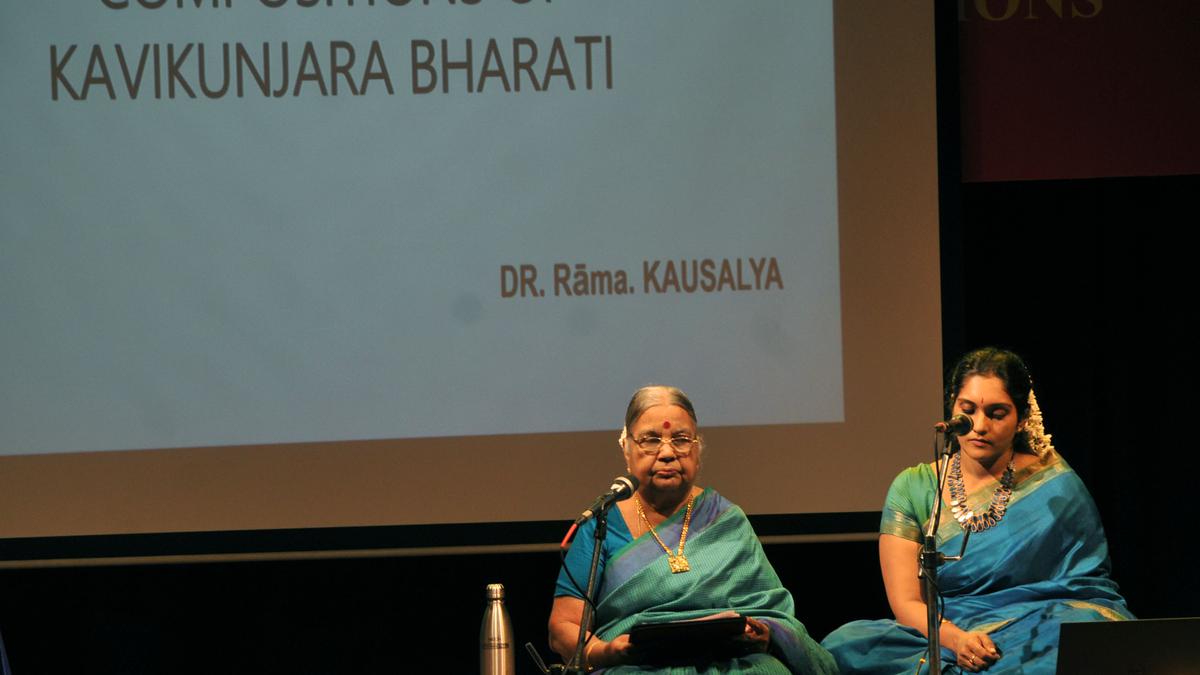Prasanna Venkataraman performing at Madhuradhwani’s december festival, 2022.
| Photo Credit: Special Arrangement
The flavour of tradition
Prasanna Venkatraman’s Rishabhapriya was a rich exercise in every way
Revathi R.
Madhuradhwani
Prasanna Venkatraman’s concert was distinguished by neat presentation and perfect diction. Endowed with a sonorous voice, Prasanna explored the sangathis with a clear build-up, in a balanced selection of ragas and compositions.
Warming up with a less heard Kanada varnam ‘Ninne kori’ in Adi talam by Tiruvottiyur Thyagayyar, Prasanna launched into ‘Anudinamunu kavumayya’, the Begada kriti by Poochi Srinivasa Iyengar. It seemed like the charming chittaswaras were not enough for Prasanna to express the beauty of the raga. He elaborated at the charanam line ‘Kanakana ruchi nee rupamu’ and interpolated a few rounds of kalpanaswaras demonstrating the precise madhyama of Begada. Sayee Rakshith on the violin joined him with a delightful swara display.
Prasanna’s raga alapanas stood out for their traditional interpretations and his elaborate delineation of three ragas competed for main place in the concert — Manirangu, Rishabhapriya and Bhairavi . ‘Jaya jaya padmanabhanujesha’ (Swati Tirunal, Adi) revealed the grandeur of Manirangu.
Prasanna took up another inspiring vivadi melody, Rishabhapriya and rendered Koteeswar Iyer’s ‘Ghana naya desika’, replete with aesthetic touches. For this kriti that mentions the names of the notes, Prasanna interestingly chose to sing the slow-paced kalpanaswaras resting at different swaras in the ascending order and began the fast-paced section from the series reaching upper shadjam. From raga essay to kriti rendition and from niraval to swaraprastara, it was a rich exercise in every way.
After a quick rendezvous with ‘Vara raga laya’ in Chenju Kamboji (Tyagaraja, Adi) that had crisp chittaswaram, Prasanna anchored himself in a Bhairavi alapana. The grand ‘Upacharamulanu’ by Tyagaraja was a crown to the alapana and dictated a feel of sowkhyam, except for a bit of a strained voice at some point. The customary niraval at ‘Kapata nataka sutradhari’ was followed by an interesting weave in the swarakalpana alternatively resting in madhyama and panchama.
Sayee Rakshith put forth some impassioned playing and focussed on melodic phrases.
A pleasant rendition of Narayana Tirtha’s ‘Govardhana giridhara’ in Darbari Kanada followed the thani and the concluding number ‘Poonguyil koovum’ had a couple of short surprise phrases of Kapi.
Manoj Siva on the mridangam combined deft touches with sobriety and the tani avartanam with N. Rajaraman (ghatam) had impressive exchanges. The subtle strokes during the Manirangu and Rishabhapriya essays were a treat to the ears.







